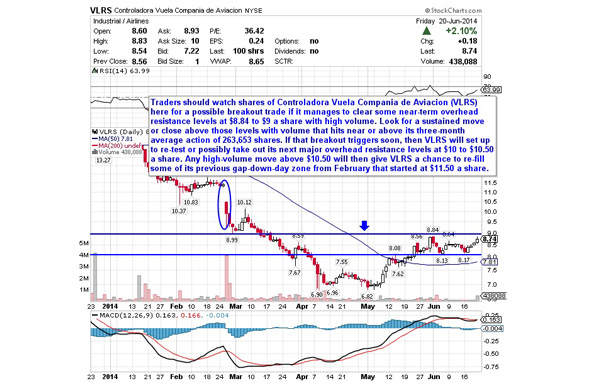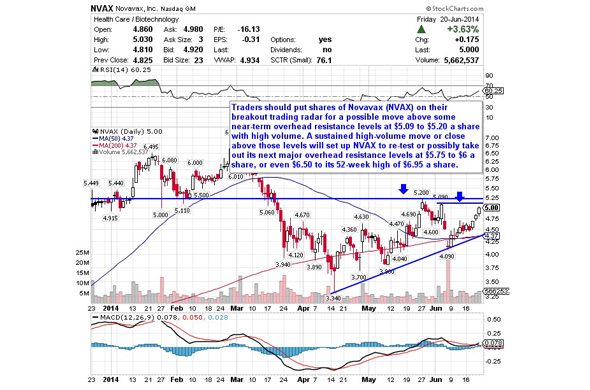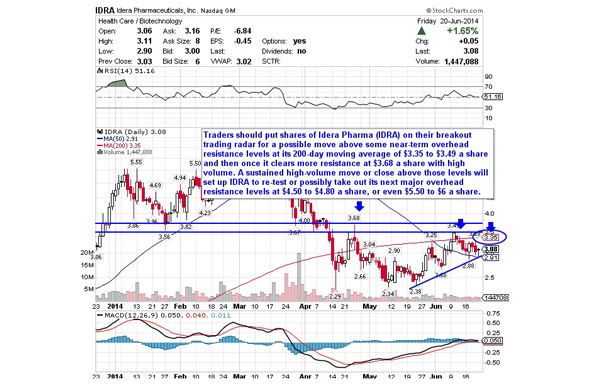In a report, the Commerce Department said new home sales vaulted 18.6 percent to a seasonally adjusted annual rate of 504,000 units, the highest level since May 2008. New home sales increased in all four regions. The sales hit a six-year high in the Midwest and were the highest since June 2008 in the South. An improving housing market and availability of different financing options, has led to a dramatic increase in the demand for new homes. Buyers who had previously delayed their home purchases are now motivated to buy, before home prices and interest rates rise in the future. High rental occupancy and rising rents have also triggered renters to reconsider purchasing a home. Three companies are poised to reap the rewards from the rising demand for new homes.
PulteGroup (PHM) witnessed a strong start in 2014, with first quarter results showing gains resulting from the strategies which focused on profitable growth and higher margins, rather than sales volume. For the quarter, the Company reported pretax income of $130 million, an increase of 58% over prior year pretax income of $82 million. Net income for the period was $75 million, or $0.19 per share, compared with prior year net income of $82 million, or $0.21 per share.
Rising mortgage rates don't affect these buyers, and they are more willing to explore different home options and upgrades, compared to the entry-level buyers. The company's Pulte and Del Webb brands, contribute mostly from its "move-up" sales. As a result, although total home purchases for PulteGroup were down 6% year-over-year, the gross margin increased by 580 basis points year-over-year to 23.8% in the first quarter of 2014.
Land acquisition is an important factor that boost the earning of the Company. As part of a comprehensive capital allocation process, PulteGroup maintains a disciplined land acquisitions and divestitures program designed to enhance long-term returns on invested capital. Land investments are evaluated through a formal risk weighting process, with a bias toward optioning rather than owning land positions.
Del Webb is going to be the growth driver for PulteGroup in the coming years. This is because Dell Webb's sales growth is higher than its other brands, and it contributes higher margins. Looking at booming market conditions, Del Webb began sales at its Carolina Arbors community in July 2013. The community sprawls across nearly 460 acres and has 1,275 new homes. The price of each home ranges between $198,990 and $344,990.
Taylor Morrison (TMHC) is the eighth-largest U.S. homebuilder in terms of revenue. The increase in home prices and strong demand for homes has made Southwest Florida a good investment option for residential construction companies. There are more buyers than sellers in this market, which is driving up home prices. Looking at the growth opportunity, the company is rapidly expanding in Southwest Florida and has undertaken several projects. It is developing a resort lifestyle community of 443 single-family homes and a Golf and Country Club community with 1,121 single-family homes. It expects to increase its community count by 30% in 2014. The rising number of communities is expected to increase Taylor Morrison's revenue by 53% to $2.19 billion in 2013 and around $3.01 billion in 2014 to $3.36 billion in 2015.
According to CoreLogic, a leading residential property information provider, around 850,000 residential properties have returned to a state of positive in 2014. Positive equity means that the value of the property is now more than the mortgage on the home. This will allow buyers to profit from the sale of their existing home and look for a new home. Taylor Morrison it purchased 87% of its owned plots in the U.S. during recession at a very low price. These plots will generate healthy returns and will improve its gross margin.
Conclusion
The improvements in the housing sector and rise in demand of new homes have helped these companies to expand their presence and increase their earnings. PulteGroup is concentrating on its move-up segment to increase its margin. It has begun home sales in its adult retirement community, Carolina Arbors, in keeping with its strategy. Taylor Morrison is expected to increase its community count and is prioritizing improving its margins.
I recommend a buy for both the stocks.
| Currently 0.00/512345 Rating: 0.0/5 (0 votes) | |

Subscribe via Email

Subscribe RSS Comments Please leave your comment:
More GuruFocus Links
| Latest Guru Picks | Value Strategies |
| Warren Buffett Portfolio | Ben Graham Net-Net |
| Real Time Picks | Buffett-Munger Screener |
| Aggregated Portfolio | Undervalued Predictable |
| ETFs, Options | Low P/S Companies |
| Insider Trends | 10-Year Financials |
| 52-Week Lows | Interactive Charts |
| Model Portfolios | DCF Calculator |
RSS Feed  | Monthly Newsletters |
| The All-In-One Screener | Portfolio Tracking Tool |

MORE GURUFOCUS LINKS
| Latest Guru Picks | Value Strategies |
| Warren Buffett Portfolio | Ben Graham Net-Net |
| Real Time Picks | Buffett-Munger Screener |
| Aggregated Portfolio | Undervalued Predictable |
| ETFs, Options | Low P/S Companies |
| Insider Trends | 10-Year Financials |
| 52-Week Lows | Interactive Charts |
| Model Portfolios | DCF Calculator |
RSS Feed  | Monthly Newsletters |
| The All-In-One Screener | Portfolio Tracking Tool |
PHM STOCK PRICE CHART

20.11 (1y: +6%) $(function(){var seriesOptions=[],yAxisOptions=[],name='PHM',display='';Highcharts.setOptions({global:{useUTC:true}});var d=new Date();$current_day=d.getDay();if($current_day==5||$current_day==0||$current_day==6){day=4;}else{day=7;} seriesOptions[0]={id:name,animation:false,color:'#4572A7',lineWidth:1,name:name.toUpperCase()+' stock price',threshold:null,data:[[1372395600000,18.97],[1372654800000,19.11],[1372741200000,19],[1372827600000,19.15],[1373000400000,18.59],[1373259600000,18.06],[1373346000000,19.05],[1373432400000,19.02],[1373518800000,20.39],[1373605200000,20.22],[1373864400000,19.54],[1373950800000,19.28],[1374037200000,19.49],[1374123600000,19.11],[1374210000000,19.36],[1374469200000,19.14],[1374555600000,19.34],[1374642000000,18.45],[1374728400000,16.55],[1374814800000,16.36],[1375074000000,16.39],[1375160400000,16.18],[1375246800000,16.63],[1375333200000,16.72],[1375419600000,17.22],[1375678800000,16.86],[1375765200000,16.19],[1375851600000,15.78],[1375938000000,15.76],[1376024400000,15.67],[1376283600000,15.73],[1376370000000,15.37],[1376456400000,15.11],[1376542800000,15.91],[1376629200000,16.28],[1376888400000,15.65],[1376974800000,16.19],[1377061200000,16.1],[1377147600000,16.32],[1377234000000,16.06],[1377493200000,16.15],[1377579600000,15.59],[1377666000000,15.38],[1377752400000,15.86],[1377838800000,15.39],[1378184400000,15.39],[1378270800000,15.32],[1378357200000,15.25],[1378443600000,15.47],[1378702800000,16.63],[1378789200000,16.29],[1378875600000,16.59],[1378962000000,16.53],[1379048400000,16.52],[1379307600000,17.14],[1379394000000,17],[1379480400000,17.93],[1379566800000,17.62],[1379653200000,17.12],[1379912400000,16.75],[1379998800000,17.1],[1380085200000,17.18],[1380171600000,16.98],[1380258000000,16.57],[1380517200000,16.5],[1380603600000,16.67],[1380690000000,16.91],[1380776400000,16.5],[1380862800000,16.2],[1381122000000,16.02],[1381208400000,15.59],[1381294800000,15.58],[1381381200000,15.86],[1381467600000,16.11],[1381726800000,15.99],[1381813200000,15.54],[1381899600000,16.02],[1381986000000,16.66],[1382072400000,16.58],[1382331600000,16.38],[1382418000000,16.53],[1382504400000,16.68],[1382590800000,17.85],[1382677200000,18.04],[1382936400000,18.02],[1383022800000,18.21],[1383109200000,18],[13831956! 00000,17..65],[1383282000000,17.55],[1383544800000,17.83],[1383631200000,17.53],[1383717600000,17.77],[1383804000000,17.51],[1383890400000,16.85],[1384149600000,16.71],[1384236000000,16.76],[1384322400000,17.03],[1384408800000,17.86],[1384495200000,18.1],[1384754400000,18.28],[1384840800000,18.21],[1384927200000,18.12],[1385013600000,18.38],[1385100000000,18.22],[1385359200000,18.15],[1385445600000,18.95],[1385532000000,18.85],[1385704800000,18.76],[1385964000000,18.5],[1386050400000,18.43],[1386136800000,18.35],[1386223200000,17.99],[1386309600000,18.18],[1386568800000,18.33],[1386655200000,18.43],[1386741600000,18.07],[1386828000000,18.06],[1386914400000,18.03],[1387173600000,18.11],[1387260000000,18.02],[1387346400000,18.41],[1387432800000,18.25],[1387519200000,18.62],[1387778400000,19.71],[1387864800000,19.73],[1388037600000,19.98],[1388124000000,20.07],[1388383200000,20.13],[1388469600000,20.37],[1388642400000,20.08],[1388728800000,20.04],[1388988000000,19.84],[1389074400000,19.54],[1389160800000,19.78],[1389247200000,19.79],[1389333600000,20.16],[1389592800000,19.4],[1389679200000,19.52],[1389765600000,19.47],[1389852000000,19.69],[1389938400000,19.36],[1390284000000,19.2],[1390370400000,19.63],[1390456800000,19.65],[1390543200000,18.84],[1390802400000,18.71],[1390888800000,19.45],[1390975200000,19.43],[1391061600000,19.77],[1391148000000,20.32],[1391407200000,19.69],[1391493600000,19.87],[1391580000000,19.49],[1391666400000,20.13],[1391752800000,19.8],[1392012000000,19.35],[1392098400000,19.67],[1392184800000,19.6],[1392271200000,19.82],[1392357600000,20.02],[1392703200000,19.79],[1392789600000,19.66],[1392876000000,20.02],[1392962400000,20.37],[1393221600000,20.42],[1393308000000,20.68],[1393394400000,21.25],[1393480800000,21.29],[1393567200000,20.99],[1393826400000,20.81],[1393912800000,20.91],[1393999200000,20.64],[1394085600000,20.58],[1394172000000,20.31],[1394427600000,20],[1394514000000,19.93],[1394600400000,19.67],[1394686800000,19.18],[1394773200000,19.15],[1395032400000,19.22],[13951188! 00000,19.4! 8],[1395205200000,19.61],[1395291600000,19.4],[1395378000000,19.11],[1395637200000,18.84],[1395723600000,18.8],[1395810000000,18.57],[1395896400000,18.68],[1395982800000,19.01],[1396242000000,19.19],[1396328400000,19.63],[1396414800000,19.69],[1396501200000,19.71],[1396587600000,19.49],[1396846800000,19.03],[1396933200000,19.12],[1397019600000,19.15],[1397106000000,18.94],[1397192400000,18.71],[1397451600000,18.76],[1397538000000,18.69],[1397624400000,18.9],[1397710800000,18.71],[1398056400000,18.72],[1398142800000,18.67],[1398229200000,18.57],[1398315600




